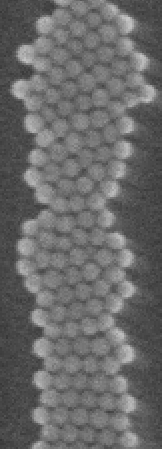I have an images of particles and I want to get the center point coordinates for each particle. I can get the coordinates with other imaging tools, but since my calculations are in mathematica i want to do everything in the same notebook. here are two images, one is with more resolution than the other one, preferably I want the image with Low Resolution
High Resolution  Low Resolution
Low Resolution
Expecting 
Thank you very much,

